Pane Incamiciato, or “bread in a shirt,” is a stunning Sicilian-style loaf made by wrapping a seeded boule in a thin layer of dough and scoring it to create dramatic, petal-like flaps that bloom open as it bakes.
Traditionally served plain or stuffed with savory fillings, this rustic bread is as beautiful as it is delicious. Whether you use all-purpose flour alone or enhance the flavor and color with fine semola rimacinata, the result is a showstopping centerpiece perfect for any table.
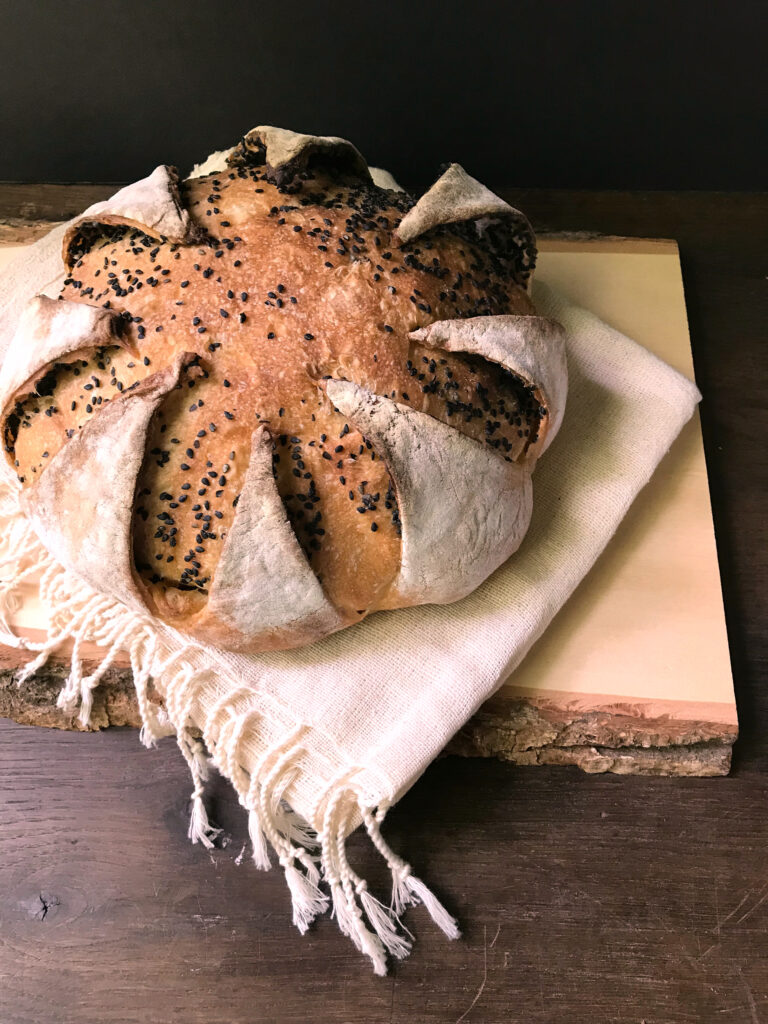
🌸Behind the Bake- A Weekend Bread Project
I’d seen these beautiful, flower-shaped breads before—but I’d never tried making one myself.
Lately, I’d been feeling a little uninspired in my baking routine, stuck in the rhythm of familiar loaves. So one weekend, I decided to browse Pinterest for a bit of seasonal inspiration. I searched for Spring breads and May baking ideas, just hoping something would catch my eye.
That’s when I was reminded of Pane Incamiciato—an Italian bread that translates to “bread in a shirt.” A simple boule is wrapped in a thin layer of dough, and then scored so the top opens up like petals as it bakes. It’s the kind of bread that looks impressive but feels approachable—perfect for a slow weekend in the kitchen.
This became just the project I needed: creative, hands-on, and deeply satisfying. And since May is the season of flowers and fresh starts, it felt like the perfect time to finally bake (and share) this blooming loaf.

🌼Why You Should Make Pane Incamiciato
If you’re looking for a bread that’s equal parts showstopping and satisfying, Pane Incamiciato checks all the boxes. It’s a beautiful, flower-shaped loaf that brings a bit of drama to the table with its petal-like scoring and domed, sesame-topped center.
But beyond its looks, it’s also a joy to make — a creative bread project that’s perfect when you need something fresh to spark your baking mojo.
- A centerpiece-worthy loaf for spring gatherings or brunch
- Simple ingredients, no fancy equipment required
- Customizable: keep it plain or tuck in a savory filling
- Fun to shape and score, even if you’ve never tried it before
Whether you’re an experienced baker or just ready to try something new, this is the kind of bread that makes you fall in love with the process again.
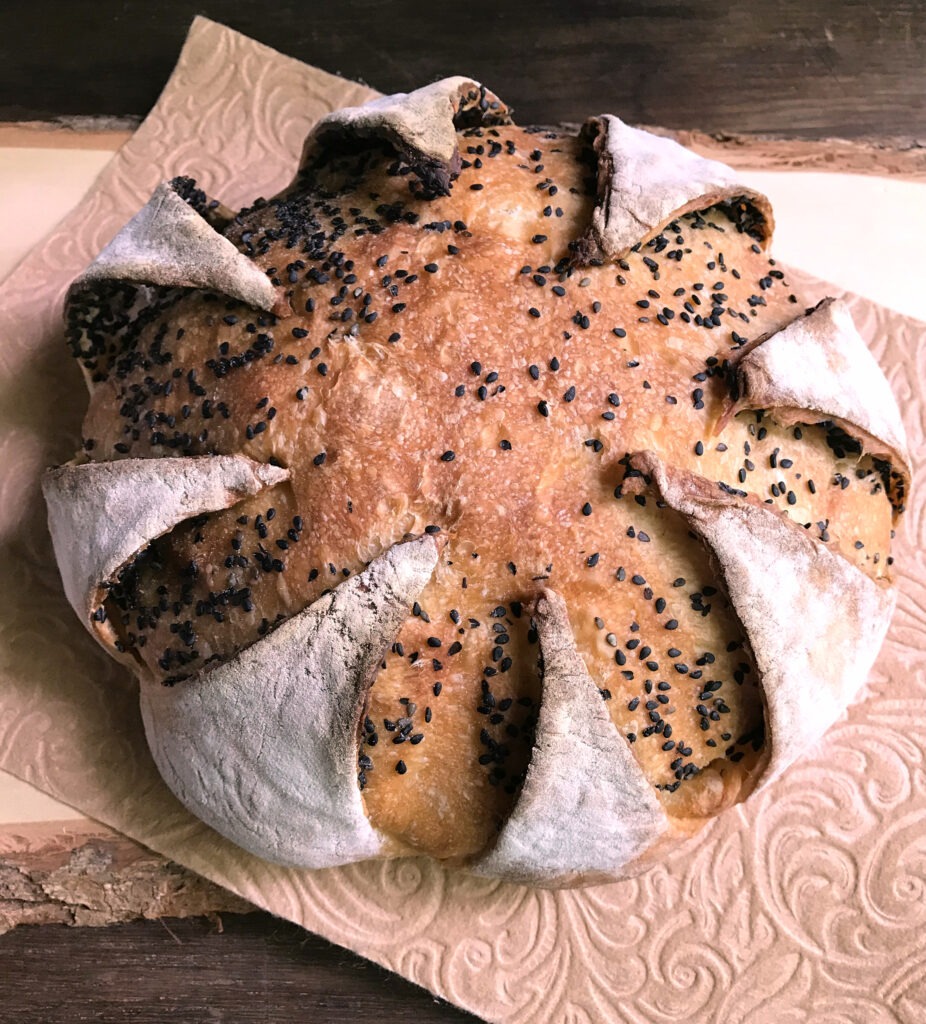
🌾What Is Semola Rimacinata?
Semola rimacinata is a finely ground flour made from durum wheat — the same wheat commonly used for pasta. The word “rimacinata” means “re-milled” in Italian, referring to the process of grinding coarse semolina a second time into a much finer, soft flour.
Unlike regular semolina (which has a gritty, cornmeal-like texture), semola rimacinata is smooth and almost flour-like. It’s a staple in Italian baking, often used in pasta dough, rustic breads, and pizza crusts, and brings a lovely golden color and subtle chew to the final loaf.
Note: Don’t confuse it with the coarse semolina sold in most U.S. grocery stores — for bread baking, look for imported brands labeled “Semola Rimacinata di Grano Duro.”
As someone who enjoys experimenting with different flours, I couldn’t resist incorporating a bit of semola rimacinata into this loaf. It gave the dough a slightly more structured feel and added a touch of color and character to the finished bread.
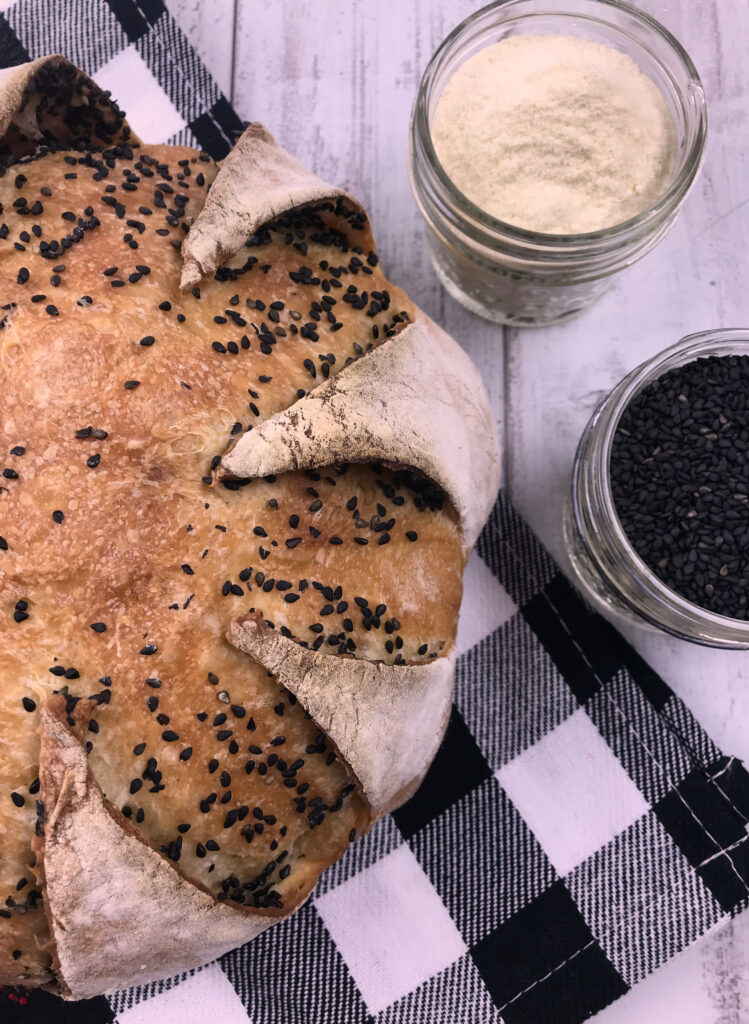
✅Can I Use Just All-Purpose Flour?
Absolutely! Although I chose to include a portion of semola rimacinata in my version of Pane Incamiciato, this petal-style bread works beautifully with 100% all-purpose flour. You’ll get a soft, tender crumb and a golden crust, even without specialty flours.
Want more texture or color?
Try swapping in one of the following:
- Semola rimacinata – adds subtle chew and a warm yellow hue
- Finely ground whole wheat flour – brings a bit of rustic character
No need to track down special flours if you don’t have them on hand — all-purpose flour is more than enough to create a stunning and delicious Pane Incamiciato.
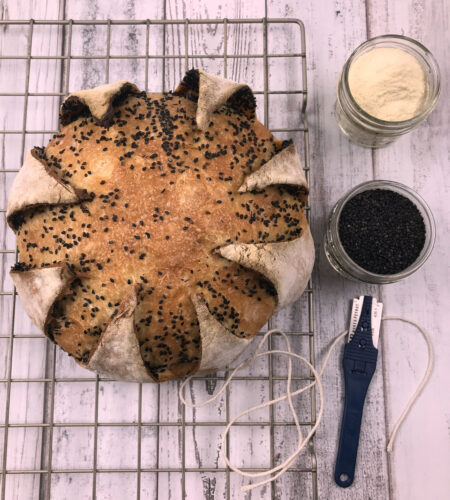
❓ Why didn’t my petals open during baking?
If your Pane Incamiciato didn’t bloom as expected, a few small adjustments can make a big difference next time:
- The outer dough layer may have been too thick — If the disc is too heavy, it won’t lift properly. Roll it thin, about 1/8 to 1/4 inch (3–5 mm).
- The scoring might not have gone deep enough through the outer layer — You want to slice cleanly through the wrapped dough (but not into the inner boule).
- The oven may not have been hot enough — A fully preheated oven, ideally at 425°F (220°C), helps generate strong oven spring, which encourages the petals to open.
- The dough may have been over proofed — If it’s too relaxed by the time it hits the oven, it won’t have the strength to lift and pull apart.
Even small tweaks — like rolling a bit thinner, scoring more confidently, or adjusting oven heat — can dramatically improve your results.
📦 Storage + Reheating Tips
This bread is best enjoyed the day it’s baked, but it keeps well for up to 2 days if stored properly.
To store- Wrap loosely in a clean kitchen towel or paper bag to preserve the crust. Avoid sealing in plastic, which softens the crust.
To reheat- Warm in a 350°F (175°C) oven for 5–8 minutes to refresh the crust and crumb. For a softer crust, wrap in foil before reheating.
To freeze- After baking: Cool completely, wrap tightly in plastic wrap and then foil. Freeze for up to 1 month. Before final proof: Shape and wrap tightly, freeze, then thaw overnight in the fridge and proof before baking.
Print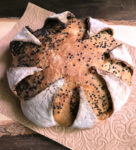
Pane Incamiciato- A Flower-Shaped Sicilian Bread for Spring Baking
- Yield: 1 Loaf 1x
Description
Pane Incamiciato, or “bread in a shirt,” is a stunning Sicilian-style loaf made by wrapping a seeded boule in a thin layer of dough and scoring it to create dramatic, petal-like flaps that bloom open as it bakes. Traditionally served plain or stuffed with savory fillings, this rustic bread is as beautiful as it is delicious.
Ingredients
425 All-purpose flour Or use 300 g all-purpose + 125 g semola rimacinata (optional)
325 g Water (65% hydration)
75 g Sourdough Starter (100% hydration, active and fed)
1/8 tsp Instant Yeast, optional
10 g Salt
10 g Olive oil, optional (Adds tenderness + extra for spreading on the disc)
Black sesame seeds, as needed for topping the inner boule
Instructions
🔪 Dough Division
After the first rise (bulk fermentation), divide dough like this:
- 2/3 (~550 g) → shape into a boule (the inner core)
- 1/3 (~270 g) → roll into a thin disk (the outer wrap)
1. Mix & Autolyse
- Combine flour (AP only or AP + semola) and water in a bowl until no dry flour remains.
- Let rest 30 minutes.
2. Add sourdough
- Mix in sourdough starter and dried yeast (if using) until thoroughly incorporated.
- Let rest 30 minutes.
3. Add Salt and Oil
- Mix in salt and distribute evenly throughout the dough.
- Pour in the olive oil (if using). Work it in with your fingers until incorporated.
- Knead until smooth and elastic, about 8–10 minutes by hand.
4. Bulk Ferment
- Cover the dough and let it rest for 1.5 to 2 hours at room temperature.
- After 45 minutes, stretch and fold the dough, form into a ball, and place it back in the bowl.
- Cover and let the dough rest for another 45 minutes to an hour and 15 minutes, until nearly doubled. Be careful not to let it over proof.
5. Divide and Shape
- Divide the dough into two pieces – 1/3rd and 2/3rd approximately in size. My pieces weighed 270g and 500g respectively.
- Shape the larger portion into a smooth and tight boule.
- Flatten or roll out the remaining 1/3 portion into a thin, even disc, that is big enough to wrap around the boule. Be careful not to make the disc too thin or too thick.
- Spread black sesame seeds uniformly on a rimmed baking sheet. Lightly brush the surface of the disc with olive oil. This will help keep the separation between the dough when scoring.
- Hold the boule from the underside. Dampen the top and sides with a little water. While still holding the boule, roll it gently in the sesame seeds and coat it thoroughly and evenly on the top and sides.
- Carefully place the ball, with the sesame seed surface facing down, in the center of the disc. Gently lift and drape the disc up and over the boule to wrap it, pleating or folding the dough as needed. Don’t seal it too tightly underneath.
- Gently place the wrapped loaf seam-up in a lightly floured round banneton proofing basket.
- Cover and place it in the refrigerator to cold ferment for 30-45 minutes. The loaf will continue to proof in the refrigerator and the cold will help with scoring.
6. Create the Petals
- Preheat the oven to 220°C / 425°F with a baking stone on the lower half of the oven.
- When the oven is almost ready, remove the proofed loaf from the refrigerator, and gently flip it out of the basket and seamside down on a piece of parchment.
- Lightly dust the surface of the dough with flour. Using a piece of string or twine, mark the surface into 8 equally spaced spokes, similar to a wheel.
- Using a blade or lame, score smoothly along the marked spokes, starting from the center down to the sides. Cut through the outer dough layer, deep enough to reach the sesame seed layer, but not beyond. The scoring cuts should be neat and separated and you should be able to see the sesame seed layer.
7. Bake
- Slide the loaf (parchment and all) onto the preheated baking stone.
- Bake the loaf for 30–40 minutes until deep golden brown and the petals have separated and bloomed open. Rotate partway through the bake cycle for even baking.
- Let the loaf cool completely on a wire rack before slicing. The outer layers should be crisp while the crumb will be soft.
Notes
No semola? No problem — just use 100% all-purpose flour. For a more traditional flavor and golden color, use Italian semola rimacinata (not coarse semolina). This bread is often left plain, but can also be stuffed with greens, cheese, or seasoned ricotta before baking.
Pro Tip: Get the Bloom with a Hot Base- Those signature petals won’t open unless the loaf gets a strong oven spring. I baked my Pane Incamiciato on a preheated baking steel at 425°F (220°C) with no added steam, and it bloomed beautifully. Even without steam, the hot base gives the loaf a strong rise and helped the petals open naturally during the bake.
Here’s what helps:
- Roll the outer dough disk thin — about 1/8 to 1/4 inch (3–5 mm)
- Score only through the outer wrapping layer — avoid cutting into the inner boule
- Use a baking steel or stone for direct heat and better lift
- Fully preheat your oven for consistent top and bottom heat
- Category: Artisan Bread
- Method: Sourdough
- Cuisine: Sicilian
Happy Baking! See you in the kitchen!
Cathy
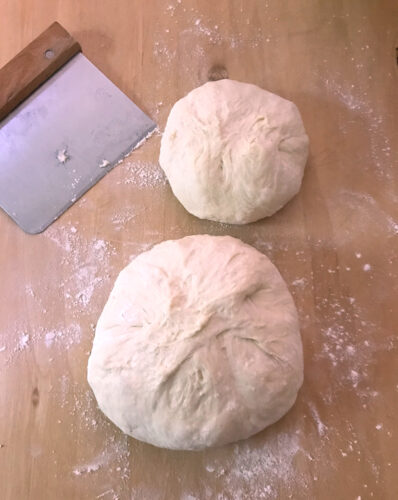
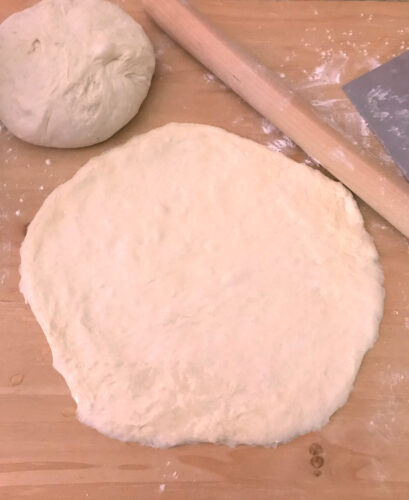
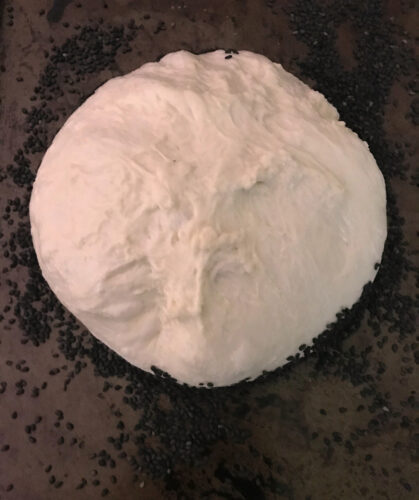
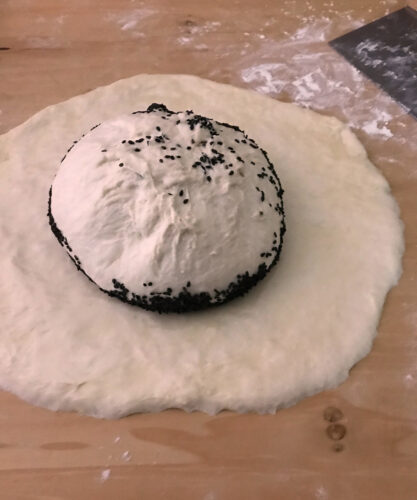
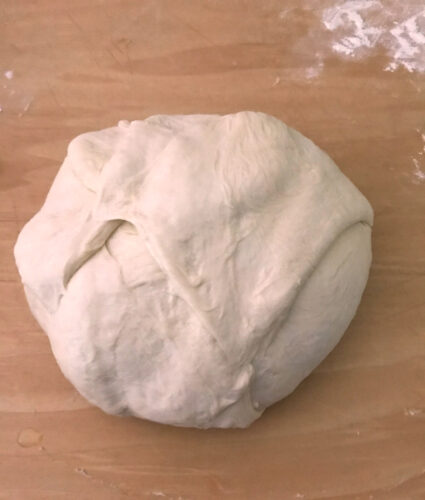
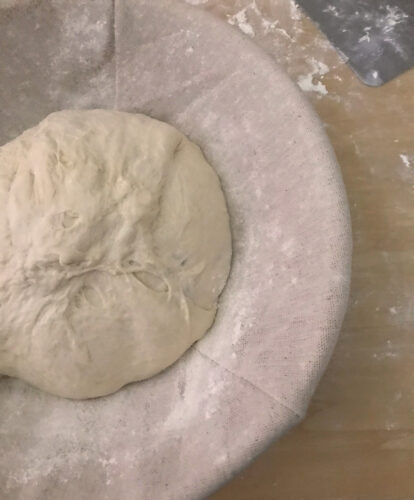
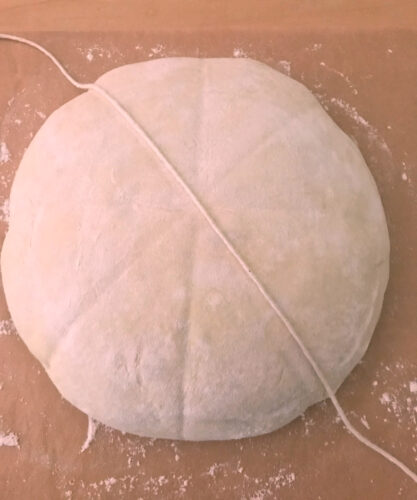
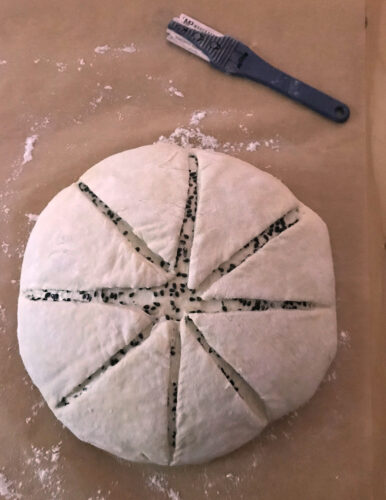
Leave a Reply